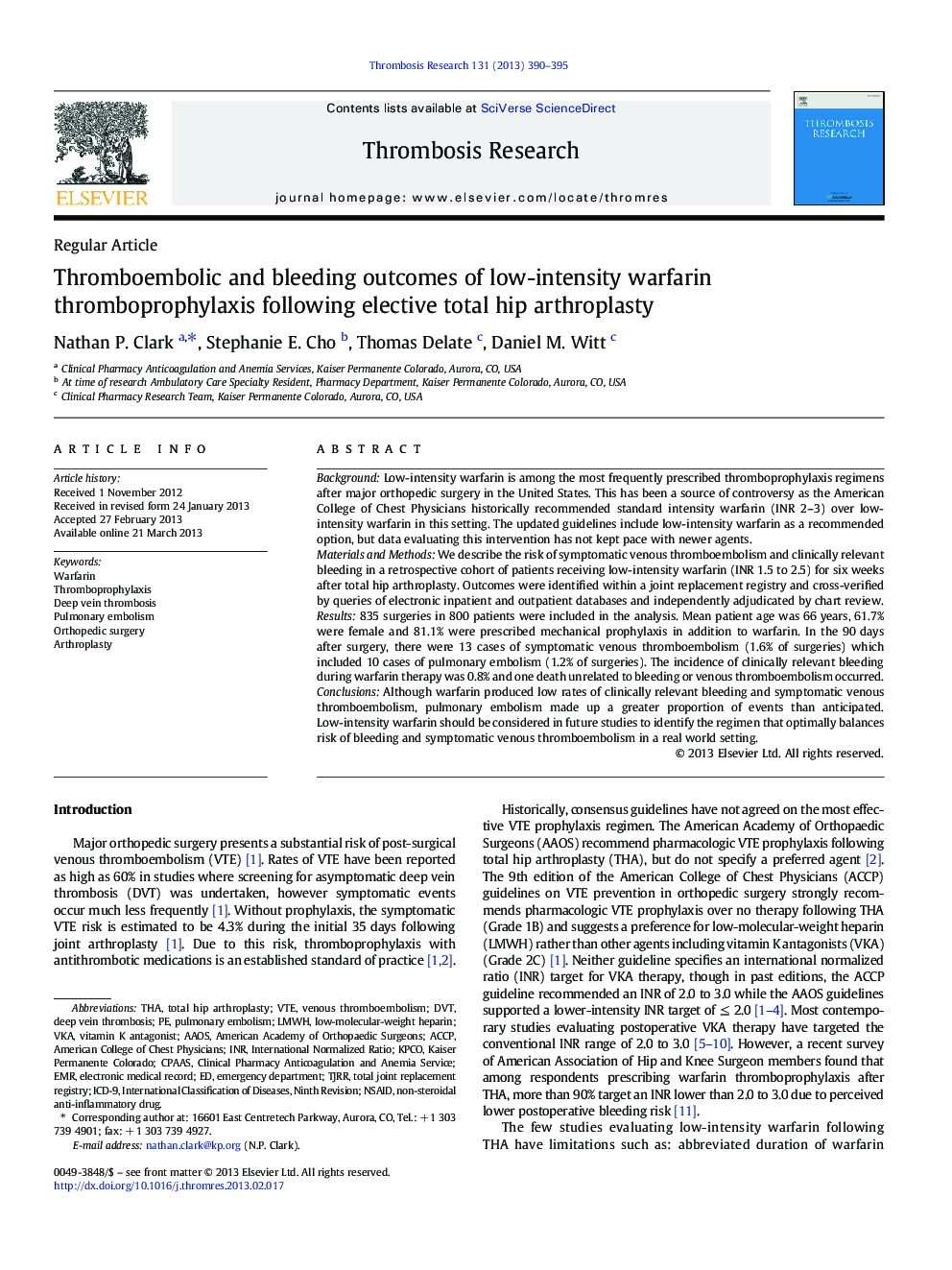| کد مقاله | کد نشریه | سال انتشار | مقاله انگلیسی | نسخه تمام متن |
|---|---|---|---|---|
| 6003130 | 1182992 | 2013 | 6 صفحه PDF | دانلود رایگان |
BackgroundLow-intensity warfarin is among the most frequently prescribed thromboprophylaxis regimens after major orthopedic surgery in the United States. This has been a source of controversy as the American College of Chest Physicians historically recommended standard intensity warfarin (INR 2-3) over low-intensity warfarin in this setting. The updated guidelines include low-intensity warfarin as a recommended option, but data evaluating this intervention has not kept pace with newer agents.Materials and MethodsWe describe the risk of symptomatic venous thromboembolism and clinically relevant bleeding in a retrospective cohort of patients receiving low-intensity warfarin (INR 1.5 to 2.5) for six weeks after total hip arthroplasty. Outcomes were identified within a joint replacement registry and cross-verified by queries of electronic inpatient and outpatient databases and independently adjudicated by chart review.Results835 surgeries in 800 patients were included in the analysis. Mean patient age was 66Â years, 61.7% were female and 81.1% were prescribed mechanical prophylaxis in addition to warfarin. In the 90Â days after surgery, there were 13 cases of symptomatic venous thromboembolism (1.6% of surgeries) which included 10 cases of pulmonary embolism (1.2% of surgeries). The incidence of clinically relevant bleeding during warfarin therapy was 0.8% and one death unrelated to bleeding or venous thromboembolism occurred.ConclusionsAlthough warfarin produced low rates of clinically relevant bleeding and symptomatic venous thromboembolism, pulmonary embolism made up a greater proportion of events than anticipated. Low-intensity warfarin should be considered in future studies to identify the regimen that optimally balances risk of bleeding and symptomatic venous thromboembolism in a real world setting.
Journal: Thrombosis Research - Volume 131, Issue 5, May 2013, Pages 390-395
